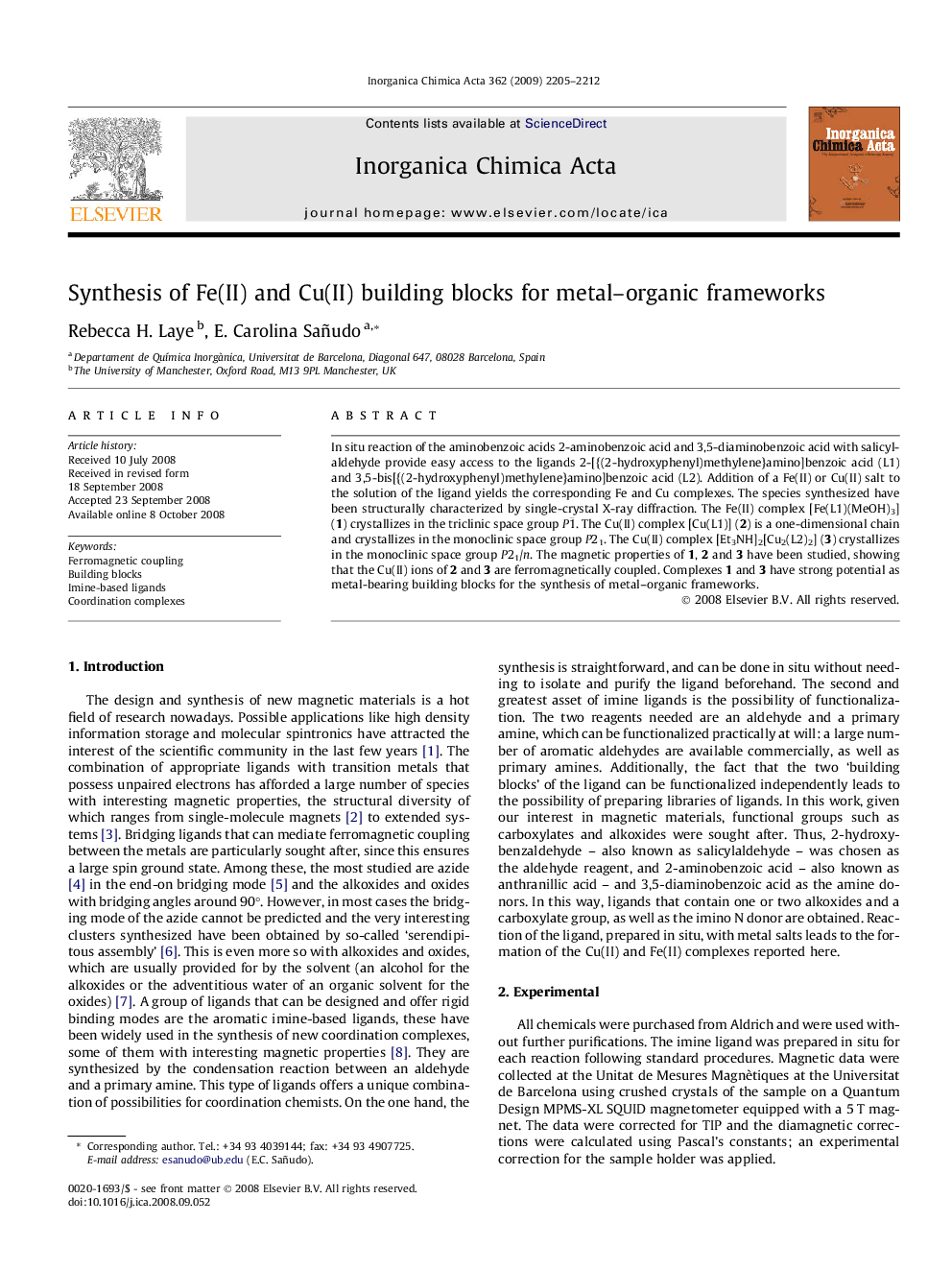| Article ID | Journal | Published Year | Pages | File Type |
|---|---|---|---|---|
| 1309841 | Inorganica Chimica Acta | 2009 | 8 Pages |
In situ reaction of the aminobenzoic acids 2-aminobenzoic acid and 3,5-diaminobenzoic acid with salicylaldehyde provide easy access to the ligands 2-[{(2-hydroxyphenyl)methylene}amino]benzoic acid (L1) and 3,5-bis[{(2-hydroxyphenyl)methylene}amino]benzoic acid (L2). Addition of a Fe(II) or Cu(II) salt to the solution of the ligand yields the corresponding Fe and Cu complexes. The species synthesized have been structurally characterized by single-crystal X-ray diffraction. The Fe(II) complex [Fe(L1)(MeOH)3] (1) crystallizes in the triclinic space group P1¯. The Cu(II) complex [Cu(L1)] (2) is a one-dimensional chain and crystallizes in the monoclinic space group P21. The Cu(II) complex [Et3NH]2[Cu2(L2)2] (3) crystallizes in the monoclinic space group P21/n. The magnetic properties of 1, 2 and 3 have been studied, showing that the Cu(II) ions of 2 and 3 are ferromagnetically coupled. Complexes 1 and 3 have strong potential as metal-bearing building blocks for the synthesis of metal–organic frameworks.
Graphical abstractIn situ reaction of the aminobenzoic acids 2-aminobenzoic acid and 3,5-diaminobenzoic acid with salycylaldehyde provide easy access to the ligands 2-[{(2-hydroxyphenyl)methylene}amino]benzoic acid (L1) and 3,5-bis[{(2-hydroxyphenyl)methylene}amino]benzoic acid (L2). Addition of a Fe(II) or Cu(II) salt to the solution of the ligand yields the complexes [Fe(L1)(MeOH)3] (1), [Cu(L1)] (2) and Et3NH]2[Cu2(L2)2] (3). The species synthesized have been characterized by single-crystal X-ray diffraction. The magnetic properties of 1, 2 and 3 have been studied, showing that the Cu(II) ions of 2 and 3 are ferromagnetically coupled. Complexes 1 and 3 have strong potential as metal-bearing building blocks for the synthesis of metal–organic frameworks.Figure optionsDownload full-size imageDownload as PowerPoint slide
